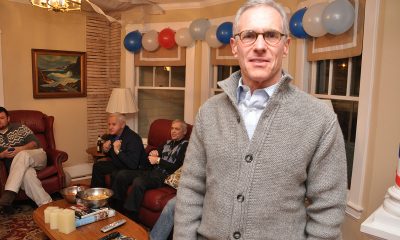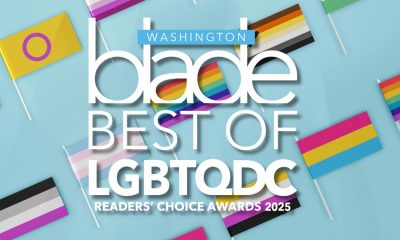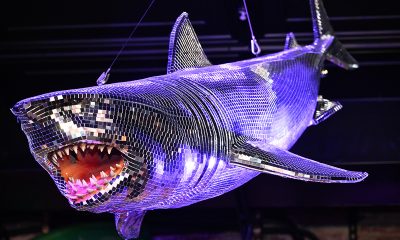a&e features
Singer/songwriter Janis Ian keeps it real in advance of April 28 D.C.-area show
‘At Seventeen’ Grammy winner weighs in on lesbian fans, soldiering on through adversity and more
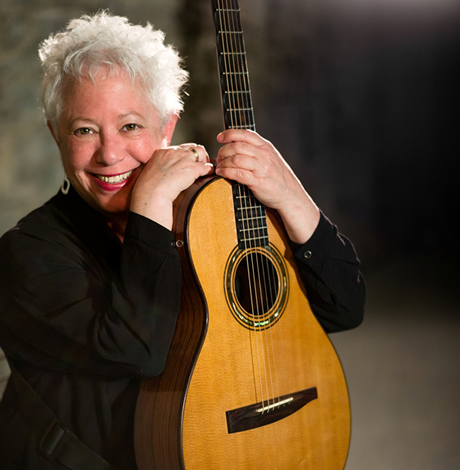

Janis Ian tells budding songwriters to study the classics and test your material on audiences who ‘couldn’t care less’ about you. (Photo by Lloyd Baggs; courtesy Ian)
Janis Ian
Saturday, April 28
The Birchmere
3701 Mount Vernon Ave.
Alexandria, Va.
7:30 p.m.
$45
birchmere.com
janisian.com
Janis Ian is having a rough weekend when we touch base April 13. The Grammy-winning singer/songwriter is soldiering on at CAMP Rehoboth Women’s Fest despite being dangerously close to having no singing voice.
She plays the Birchmere next weekend (April 28) and responded to these questions via e-mail, citing vocal preservation. Her comments have been slightly edited for length.
WASHINGTON BLADE: You’re playing CAMP Rehoboth Women’s Fest this weekend. What are the crowds like at these lesbian events? Have you done many of them?
IAN: It’s a lesbian event? (grin) I made a firm decision decades ago not to do any sort of exclusionary event, so the only “gay” events I’ve done have been Pride marches, or events like CAMP Rehoboth or the old Bloomington Women’s Music Festival (I think it has a new name now), both of which welcome all genders. As to the audiences, I’d say any time you have a festival-style event the crowds are going to be super enthusiastic because they’re there for more than just a few hours. They’re more relaxed and it’s a different excitement.
BLADE: How do you like performing at the Birchmere? Have you played there many times?
IAN: Hah! So many, I can’t even count, at the old and the new Birch. One of the best clubs in the world and I’ve played pretty much all of them. Not a bad seat in the house. I’ve even got Birchmere “war stories,” which I won’t go into here. Tom Paxton and I premiered our world tour there. I’ve premiered albums there. I can’t imagine life without it. Once I made the decision to stop touring very much, the first place to approach me was the Birchmere, via Mike Jaworek. I told him I wasn’t touring. He kept bothering me and bothering me and bothering me. I kept giving him reasons I couldn’t do it. He kept bothering me. He wore me down. Once I agreed, I got really excited. It’s like coming home and at 67, I have a perfectly good home in Tennessee already, thank you very much.
BLADE: What are the acoustics like at Carnegie Hall? Of course they’re legendary, but are they that much better than other great halls?
IAN: Yes. There’s the prestige of playing Carnegie, but there’s also the acoustics. Someone warned me about a “bass trap” in the upper left balcony before my first solo gig, so we faced the bass amp that way, and we were told it was the best sound from a band they’d ever heard. Most of the great halls were designed for non-amplified music — vaudeville halls. All the older, great Broadway halls. European halls and Carnegie. I think they’ve had to tear Philharmonic Hall apart now what — three times? — to fix the acoustics. Instead of relying on experience and ears, architectural firms and “soundscape engineers” (seriously? “soundcape engineer?”) rely on machines. Just stupid.
BLADE: Do you have Joan Baez’s new album? Any thoughts?
IAN: I do not have it yet, but my thoughts are that Joan has always been one of the kindest people on earth to me. I wish I had a song on it, but she’s done two of mine before and they’re among my proudest covers.
BLADE: How do you decide what key a song you’re writing is going to be in?
IAN: It feels right on my voice. Sometimes there’s a conflict — it might sound better in the studio a little higher or lower. Sometimes I have to change the guitar part to suit the key.
BLADE: When other artists have recorded your songs, do they often change the key?
IAN: Honestly, I have no idea. It never occurred to me to check.
BLADE: Back in the ‘60s/‘70s heyday of the big labels, did they let you have input into what your singles would be? Was there ever an instance where you were hoping it would be one song but the label was insisting on another?
IAN: I almost always had a good team around me, producer and A&R person, so I usually had input. I mean, no one wanted to put out a song the artist would refuse to sing on stage or TV, right? So fortunately for me, that’s never been a big issue. They’d have liked it if I’d written more commercial songs, but that’s not my gift.
BLADE: Amy Grant had a No. 1 hit with your song “What About the Love” in 1989. What are your memories of writing that song and do you have any idea how it got floated to a gospel artist?
IAN: I wrote it with Kye Fleming as we were sitting around her living room in Nashville, on the floor, just before Christmas I think. I was playing around with the guitar part, trying to put the first beat on the second note of the guitar pattern and making myself crazy trying to work it into my fingers. Then I began singing, “I went to see my sister. She was living with a friend …” and we were off and running. The minute we finished it, Kye said it had to go to Amy. I think Kye’s publisher must have done it, but she also knew Amy, so she may have pitched it herself. And Amy’s always said she’s a big fan of my work — she owns a hand-written copy of “At Seventeen,” for instance, so that may have helped get it in the door. Regardless, she’s a lovely woman and she did a great job.
BLADE: Have you ever demo’d it or performed it yourself?
IAN: It’s on the album “Breaking Silence.” Morgan Creek gave the rights back to me last year, so we’re in release now. In fact, I’ll be selling it at the Birchmere show because so many people have asked about it. Nice to have your first album after 10 years away become a Grammy nominee (she said musingly). It really is nice. It’s a fantastic audiophile recording; we’ve released it through Acoustic Sounds on vinyl, tape and SACD.
BLADE: Are you still friendly with Kye Fleming? About how many songs would you say you wrote together?
IAN: Yes, of course I’m still friendly with her. We lived together two-and-a-half years! We wrote 64 songs and among them are several of the absolute best songs I’ve ever been involved with. It’s a pity no one’s pushing them, because some are still un-recorded, but we did pretty well — Diane Schuur, Amy, Bette Midler, Charlie Daniels, Maura O’Connell, Cynthia Clawson, Marti Jones. It was an incredibly fertile period and I will always, always be grateful for it, and for Kye. I learned a ton about songwriting from her. She’s brilliant.
BLADE: Did you two have a private chuckle over a lesbian couple having penned a No. 1 song on the gospel music charts?
IAN: Probably not.
BLADE: Where did the material come from on your Unreleased collections? Are those alternate studio takes or songs you hadn’t previously recorded or both?
IAN: Both. I’ve spent the past 10 years plus having everything I’ve written and recorded transferred, updated, transferred, put on line. There are a lot of alt versions, though very few alt studio takes. A lot of demos and work tapes that haven’t, or have, been released.
BLADE: How long did it take you to write your memoirs?
IAN: I gave myself a year, because I’d never written anything that long before. I also researched and I had several fans who helped with research — dates, places, times and the like. It was good, because for a year I never set foot on a plane. I did four professional things — hosted a tribute to Odetta, sang at a tribute to Pete Seeger, played bass for Marie Knight and something else I can’t remember. They were all fun things to do, and they convinced me that it was more fun to do less, but do the things that brought me pleasure, than to do too much. I had time at home — long periods of time. I hadn’t had that since around 1991, so it was quite marvelous.
BLADE: What was your experience like working with John Mellencamp? What’s he like in the studio?
IAN: John was great. Very honest, very hard working, very respectful. You have to remember that at the time he brought me into the studio, no one in the music business gave a crap about me. I couldn’t get a publisher, a manager, a booking agent, record company — nothing and no one. John was the only professional in my field to put his money where his mouth was. I mean, it’s lovely to hear, “Oh, you’re a great writer, great performer, great singer,” but it’s not so great when they can’t make space for you at the table.
BLADE: What kind of feedback did you get as an Advocate columnist? Did you enjoy the gig?
IAN: I loved working with Judy Wieder, my editor there. I’d been turning her down for a year or so, and she suckered me into lunch with her and my wife when we were in L.A. I made the mistake of going to the rest room and while I was gone, they made the deal. I learned a ton that stood me in good stead when I wrote my autobiography. Having to come up with 1,000 words every month really teaches you a lot. As does having to be funny most of the time. So yes, I enjoyed it very much. I left when Judy was promoted and I had a new editor who didn’t see things the same way. When I began, I was literally hired to be the “resident iconoclast.” When I left, they had a lot of those. So it was time to go.
BLADE: What’s a songwriting trap you see beginning writers succumb to commonly?
IAN: Oh, gosh, there are so many. Settling. Being enthralled with yourself. Not knowing the basics. Is your second verse as strong as the first? Should your second verse be the first? Are you mixing metaphors? Are you saying that because it’s true, believable, what needs to be there, or are you saying it because it feels good on your voice? So, so many. I always tell people to play out and play out for people who don’t want to hear you. Don’t play for your friends and family — they’re obligated to like your work. Play for people who couldn’t care less. That’s part of how you learn. And remember the computer term GIGO — garbage in, garbage out. You listen to crap, you’ll write crap. Mostly, it’s the CD/technology issue. When you’re young, you don’t have much of a filter. You’re enthralled with your last song, because it’s astonishing and amazing and ennobling that you can even write a song. So, if you can make a CD for practically nothing, in practically no time, you end up putting all those songs on CDs. You make way too many CDs, too fast, and you think you’re growing, but you’re not. I had this discussion the other day with someone. When I started writing, none of us could afford songbooks. So we’d buy an album, listen to it, and write out the lyrics. Somehow, that connection from your hand to your brain teaches you. That’s what I’d tell young songwriters. Take a song you love by someone else. Listen to it and write out the lyrics. Once, twice, three times. Play it and sing it for a week. Get it into your body. Then move on to the next. Keep it different. Go from contemporary to Johnny Mercer. Don’t get tied down. And write them out.
BLADE: Did you have a noticeable lesbian fan base before you were outed or did that come later?
IAN: If you’re referring to the Village Voice piece by a writer who’s now dead, I can’t comment on that. I’d lived with a man, I then lived with a woman. I married a man, then married a woman. I identify as gay because that’s my tilt, but I wasn’t “known” as a gay woman until I chose to come out with it myself. I did it around the release of “Breaking Silence” because of a conversation I had with (longtime LGBT activist) Urvashi Vaid.
BLADE: You seem so at peace and pragmatic about life and the music business. Joni Mitchell has had almost a second career giving brutally candid interviews criticizing the music industry and calling it a cesspool. Do you applaud her candor or think she just sounds bitter and overly negative?
IAN: Joni also believes she was never paid enough and she has no musical equals. I don’t listen to it much.
BLADE: You’ve been through some scary times in the country with your father and the red scare. Are you fairly confident our national guardrails and checks and balances can withstand Trump? How closely are you following this?
IAN: We’re still an experiment; remains to be seen. I follow it as closely as everyone else and I wish people would listen to various news sources and go off line for a while.
BLADE: Will there be a new Janis Ian studio album of new material at some point?
IAN: Yes. It’s part of why I’m setting deadlines for my last touring days and my last album release. And a large part of why I’m touring so little.
BLADE: What would you guess is your ratio of released (you or other artists) vs. unreleased material of the songs you’ve written?
IAN: Not a clue.
BLADE: How regularly do you write these days?
IAN: Just depends on where I am and what I’m doing at the time.
BLADE: Was it ever hard to keep writing in leaner career periods?
IAN: Depending on the era, the assumption’s that if you’re not on TV, you’re dead. (Or your career is.) If you’re not on tour, you’re dead. (Or your career is.) If you’re not on Facebook, you’re dead. (Or your career is.) Artists don’t stop being artists. We don’t stop creating. Record companies stop wanting us. Promoters stop wanting us. Even audiences stop wanting us. But we don’t stop. That’s just not how it works.
a&e features
Looking back at the 10 biggest A&E stories of 2025
‘Wicked,’ Lady Gaga’s new era, ‘Sexy’ Bailey and more

Although 2025 was a year marked by countless attacks on trans rights and political setbacks, the year also saw brilliant queer artists continuing to create art. From Cannes and Sundance Award winners now vying for Oscar consideration to pop icons entering new stages of their careers, queer people persevered to tell their stories through different media.
With the state of the world so uncertain, perhaps there’s no more vital time to celebrate our wins, as seen through some of this year’s top pop culture moments. While there’s no collection of 10 stories that fully encompass “the most important” news, here are some events that got the gays going:
10. ‘Mysterious Gaze of the Flamingo’ wins big at Cannes

The Cannes Film Festival has become a crucial start for films hoping to make their way to the Oscars, and first-time director Diego Céspedes won the top Un Certain Regard prize for his intimate western “The Mysterious Gaze of the Flamingo.” The film is set in the ‘80s and is intended as an allegory for the AIDS epidemic. Seeing a film that unpacks vital queer history win one of the most coveted awards at Cannes has been a huge point of pride in the independent filmmaking community.
Since the film bowed at Cannes, it has been selected as Chile’s Oscar entry in the Best International Feature race. Speaking with The Blade during the film’s AFI Fest run in October, Céspedes said: At first, I was kind of scared to have this campaign position in the times that we’re living [in] here. But at the same time, I think the Oscars mean a huge platform — a huge platform for art and politics.”
9. ‘The Last of Us’ returns for an even gayer season 2
While the first season of The Last of Us gave us one of TV’s most heartbreaking queer love stories in the episode “Long, Long Time,” Season 2 doubled down on its commitment to queer storytelling with the blossoming relationship between Ellie (Bella Ramsey) and Dina (Isabela Merced). The show expanded on the pair’s relationship in the original video game, making it perhaps the central dynamic to the entire season. That unfortunately came with more homophobic backlash on the internet, but those who checked out all the episodes saw a tender relationship form amid the show’s post-apocalyptic, often violent backdrop. For their performance, Ramsey was once again nominated for an Emmy, but Merced deserved just as much awards attention.
8. ‘Emilia Pérez’ sparks controversy
Jacques Audiard’s genre-bending trans musical “Emilia Pérez” proved to be an awards season juggernaut this time last year, winning the Golden Globe for Best Musical/Comedy. But when the lead star Karla Sofia Gascón’s racist, sexist, and homophobic old tweets resurfaced, the film’s Oscar campaign became a tough sell, especially after Netflix had tried so hard to sell Emilia Pérez as the “progressive” film to vote for. Mind you, the film had already received significant backlash from LGBTQ+ audiences and the Mexican community for its stereotypical and reductive portrayals, but the Gascón controversy made what was originally just social media backlash impossible to ignore. The only person who seemed to come out of the whole debacle unscathed was Zoe Saldaña, who won the Oscar for Best Supporting Actress over Ariana Grande.
7. ‘Sorry, Baby’ establishes Eva Victor as major talent
Back in January at the Sundance Film Festival, Eva Victor (known by many for her brand of sketch comedy) premiered their directorial debut “Sorry, Baby” to rave reviews, even winning the Waldo Salt Screening Award. Victor shadowed Jane Schoenbrun on the set of “I Saw the TV Glow,” and seeing Victor come into their own and establish such a strong voice immediately made them one of independent cinema’s most exciting new voices. A memorable scene in the film sees the main character, Agnes (played by Victor), struggling to check a box for male or female, just one example of how naturally queerness is woven into the fabric of the story.
Most recently, Victor was nominated for a Golden Globe for her performance in the film, and she’s represented in a category alongside Jennifer Lawrence (“Die My Love”), Jessie Buckley (“Hamnet”), Julia Roberts (“After the Hunt”), Renate Reinsve (“Sentimental Value”) and Tessa Thompson (“Hedda”). The film also received four Independent Spirit Award nominations overall.
6. Paul Reubens comes out in posthumous doc

While Paul Reubens never publicly came out as gay before passing away in 2023, the two-part documentary “Pee-wee as Himself” premiered back in May on HBO Max, giving the legendary comedian a chance to posthumously open up to the world. Directed by Matt Wolf, the documentary explores how Reubens found his alter ego Pee-Wee Herman and why he kept his private life private.
The documentary won an Emmy in the Outstanding Documentary or Nonfiction Special category and remains one of the most critically acclaimed titles of the year with a 100% Rotten Tomatoes score. Also worth noting, the National Geographic documentary Sally told the posthumous coming out story of Sally Ride through the help of her long-time partner, Tam O’Shaughnessy.
5. Lady Gaga releases ‘Mayhem’
Lady Gaga entered a new phase of her musical career with the release of Mayhem, her seventh album to date. From the frenzy-inducing pop hit Abracadabra to the memorable Bruno Mars duet featured on “Die With a Smile,” seeing Gaga return to her roots and make an album for the most die-hard of fans was especially rewarding after the underwhelming film releases of “House of Gucci” and “Joker: Folie à Deux.” Gaga has been touring with The Mayhem Ball since July, her first arena tour since 2018. She even extended her tour into 2026 with more North American dates, so the party isn’t stopping anytime soon. And Gaga is even set to make an appearance next May in “The Devil Wears Prada 2.”
4. Cynthia Erivo, Ariana Grande perform at the Oscars

While “Wicked: For Good” didn’t quite reach the heights of the first film, we will forever have Cynthia Erivo and Ariana Grande’s breathtaking live performance that opened the 97th Academy Awards. The pair sang a rendition of “Over the Rainbow,” “Home,” and “Defying Gravity,” paying proper homage to the original 1939 “Wizard of Oz.” Even non-Wicked fans can’t deny how magical and brilliantly staged this performance was. With both Erivo and Grande up for acting Oscars last year, they’re hoping to repeat success and make history with consecutive nominations. Either way, let’s hope there’s another live performance in the making, especially with two new original songs (The Girl in the Bubble and No Place Like Home) in the mix.
3. Indya Moore speaks out against Ryan Murphy
Indya Moore has consistently used social media as a platform for activism, and in September, posted a 30-minute Instagram live speaking out against “Pose” co-creator Ryan Murphy. Moore claimed that Murphy wasn’t being a true activist for trans people. “Ryan Murphy, we need you to do more. You need to address the racism, the violence, and the targeting of people on your productions, Ryan Murphy. You do need to make sure trans people are paid equally. Yes, Janet did the right thing,” Moore said. Murphy was also back in the headlines this year for the critically panned “All’s Fair” and the controversial “Monster: The Ed Gein Story” starring Laurie Metcalf and Charlie Hunnam.
2. Cole Escola wins Tony for Best Leading Actor
Few pop culture moments this year brought us together more than Cole Escola winning a Tony award for “Oh, Mary!” the Broadway show they created, wrote and starred in (we love a triple threat!) Escola made history by becoming the first nonbinary person to win a Tony in the leading actor category, and seeing them excitedly rush to the stage wearing a Bernadette Peters-inspired gown instantly became a viral social media moment.
The cherry on top of Escola’s major moment is the recent news that they are writing a Miss Piggy movie with Jennifer Lawrence and Emma Stone producing — news that also broke the internet for the better. We cannot wait!
1. Jonathan Bailey makes gay history as ‘Sexiest Man Alive’

The same year as his on-screen roles in blockbusters “Jurassic World Rebirth” and “Wicked: For Good,” Jonathan Bailey made history as the first openly gay man to be named People magazine’s “Sexiest Man Alive.” The fact that it took 40 years for an openly gay man to earn the title is a signifier of how far we still have to go with queer representation, and seeing Bailey celebrated is just one small step in the right direction.
“There’s so many people that want to do brilliant stuff who feel like they can’t,” he told PEOPLE, “and I know the LGBT sector is under immense threat at the moment. So it’s been amazing to meet people who have the expertise and see potential that I could have only dreamed of.” In 2024, Bailey founded the charity titled The Shameless Fund, which raises money for LGBTQ+ organizations.
a&e features
Your guide to D.C.’s queer New Year’s Eve parties
Ring in 2026 with drag, leather, Champagne, and more

With Christmas in the rear view mirror, we can turn our attention to ringing in a much-anticipated New Year with a slew of local LGBTQ parties. Here’s what’s on tap.
Pitchers
This spacious Adams Morgan bar is hosting the “Pitchers’ Perfect New Year’s Eve.” There will be a midnight Champagne toast, the ball drop on the big screens, and no cover, all night long. The bar doesn’t close until 4 a.m., and the kitchen will be open late (though not until close). All five floors will be open for the party, and party favors are promised.
Trade
D.C.’s hottest bar/club combo is leaning into the Shark motif with its NYE party, “Feeding Frenzy.” The party is a “glitterati-infused Naughty-cal New Year’s Even in the Shark Tank, where the boats are churning and the sharks are circling.” Trade also boasts no cover charge, with doors opening at 5 p.m. and the aforementioned Shark Tank opening at 9 p.m.. Four DJs will be spread across the two spaces; midnight hostess is played by Vagenesis and the two sea sirens sensuously calling are Anathema and Justin Williams.
Number Nine
While Trade will have two DJs as part of one party, Number Nine will host two separate parties, one on each floor. The first floor is classic Number Nine, a more casual-style event with the countdown on TVs and a Champagne midnight toast. There will be no cover and doors open at 5 p.m. Upstairs will be hosted by Capital Sapphics for its second annual NYE gathering. Tickets (about $50) include a midnight Champagne toast, curated drink menu, sapphic DJ set by Rijak, and tarot readings by Yooji.
Crush
Crush will kick off NYE with a free drag bingo at 8 p.m. for the early birds. Post-bingo, there will be a cover for the rest of the evening, featuring two DJs. The cover ($20 limited pre-sale that includes line skip until 11 p.m.; $25 at the door after 9 p.m.) includes one free N/A or Crush, a Champagne toast, and party favors (“the legal kind”). More details on Eventbrite.
Bunker
This subterranean lair is hosting a NYE party entitled “Frosted & Fur: Aspen After Dark New Year’s Eve Celebration.” Arriety from Rupaul Season 15 is set to host, with International DJ Alex Lo. Doors open at 9 p.m. and close at 3 p.m.; there is a midnight Champagne toast. Cover is $25, plus an optional $99 all-you-can-drink package.
District Eagle
This leather-focused bar is hosting “Bulge” for its NYE party. Each District Eagle floor will have its own music and vibe. Doors run from 7 p.m.-3 a.m. and cover is $15. There will be a Champagne toast at midnight, as well as drink specials during the event.
Kiki, Shakiki
Kiki and its new sister bar program Shakiki (in the old Shakers space) will have the same type of party on New Year’s Eve. Both bars open their doors at 5 p.m. and stay open until closing time. Both will offer a Champagne toast at midnight. At Kiki, DJ Vodkatrina will play; at Shakiki, it’ll be DJ Alex Love. Kiki keeps the party going on New Year’s Day, opening at 2 p.m., to celebrate Kiki’s fourth anniversary. There will be a drag show at 6 p.m. and an early 2000s dance party 4-8 p.m.
Spark
This bar and its new menu of alcoholic and twin N/A drinks will host a NYE party with music by DJ Emerald Fox. Given this menu, there will be a complimentary toast at midnight, guests can choose either sparkling wine with or without alcohol. No cover, but Spark is also offering optional wristbands at the door for $35 open bar 11 p.m.-1 a.m. (mid-shelf liquor & all NA drinks).
a&e features
Local, last-minute holiday gift ideas
Celebrate the season while supporting area businesses

The DowntownDC Holiday Market is bustling. Union Station is decked out with its annual Christmas tree. Washingtonians have wrapped their houses and apartment balconies with festive lights and holiday decorations. The holiday season is here. And with stockings to fill and empty space under the tree, Washington’s local shops and artists have plenty to offer.
Show your LGBTQ and D.C. pride with the Washington Blade’s annual holiday gift guide.
To embrace the holiday buzz: The Blanco Nwèl cocktail from Alchy Cocktails. This Caribbean eggnog is one of Alchy Cocktail’s seasonal holiday cocktails. The flavor profile is similar to coquito, a traditional Puerto Rican Christmas drink with a coconut base. As a queer and Caribbean-owned business, Alchy Cocktails has been based out of Washington since 2021. Blanco Nwèl is available in both cocktail ($24) and mocktail ($12) online and at a variety of holiday markets, including the Tingey Plaza Holiday Market, the Flea Market at Eastern Market, Union Station’s Main Hall Holiday Market, and more. ($24)
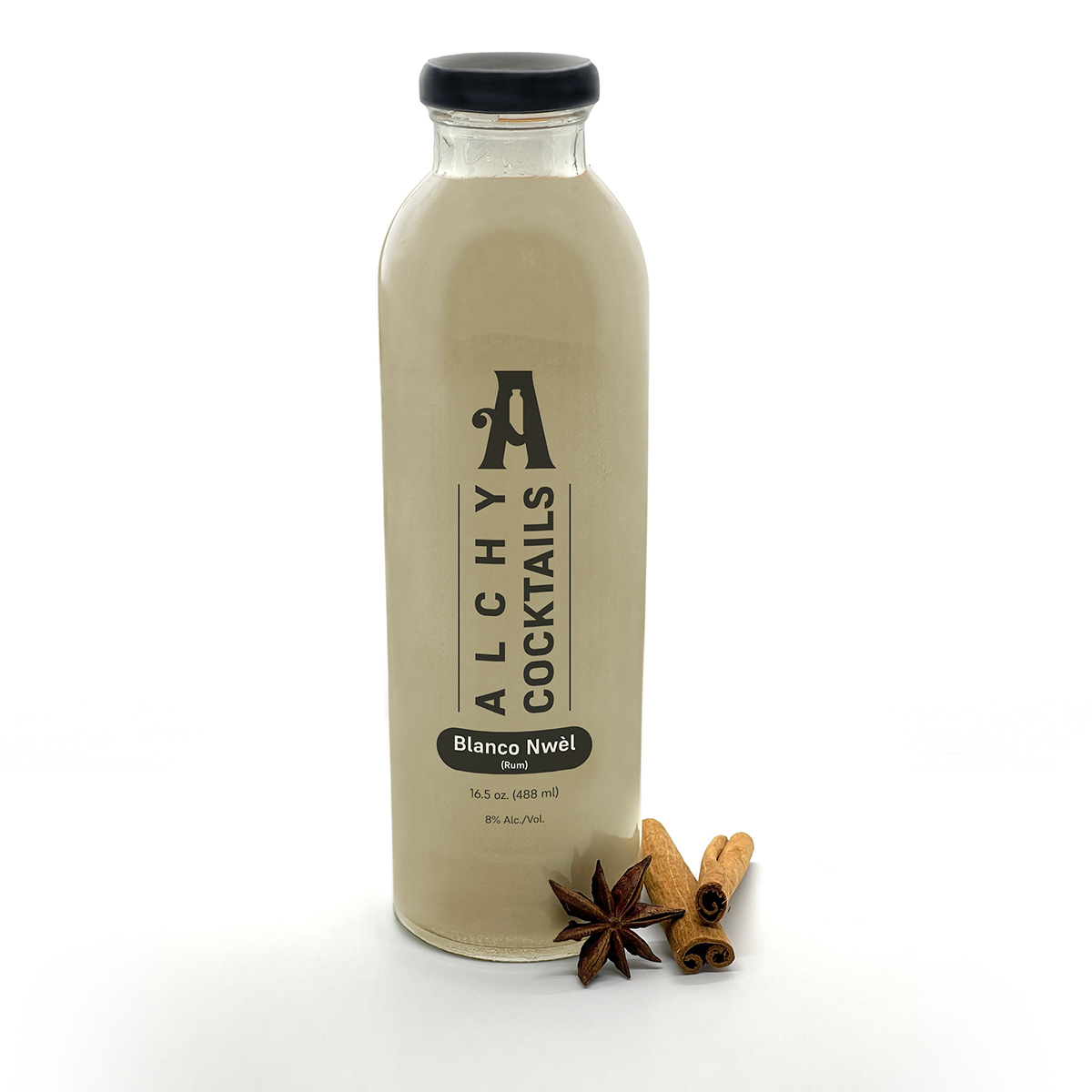
A spicy bite: Gordy’s Cajun Okra from Salt and Sundry. These spicy, tangy pickles pull on Southern Cajun-style flavors, packing a punch with paprika, cayenne, and more. Gordy’s is an LGBTQ-owned and Washington-based brand, making this gift an opportunity to support a local LGBTQ business straight from the jar. This pantry staple is available on Salt & Sundry’s website and at its locations in Union Market, Logan Circle, and its Georgetown holiday pop-up store. ($14)
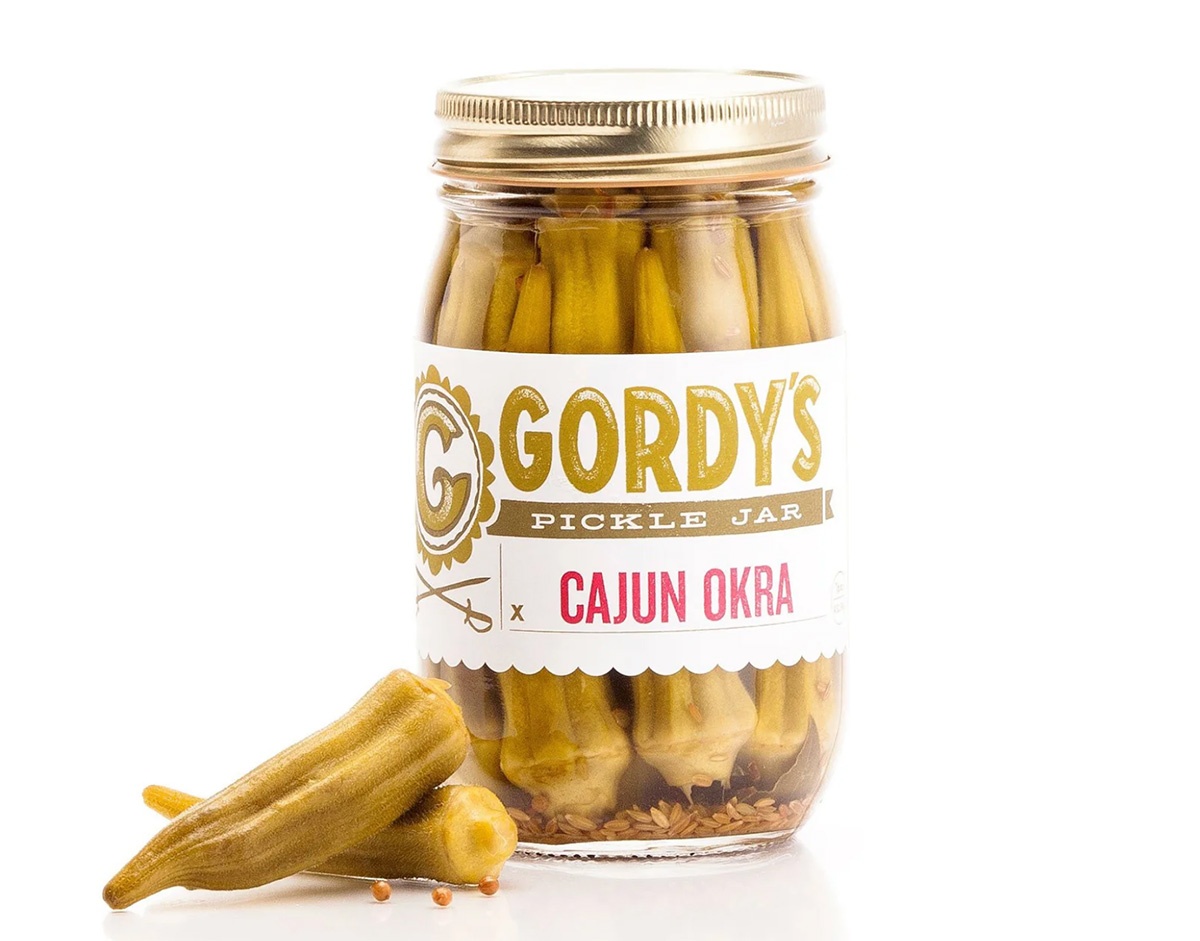

To celebrate Washington pride: The DC Landmark Tote Bag from The Neighborgoods. Native Washingtonians, visitors, friends and family alike will find something to love about this Washington-themed tote bag. Food trucks, the 9:30 Club, the Metro logo and pandas from the National Zoo are just some of the city’s landmarks depicted across the tote in a red, white, and blue color palette. The tote is a part of the DC Landmarks collection, which donates 10 percent of its sales to the American Civil Liberties Union. The Neighborgoods itself is a local, woman-owned business built out of a passion for screen-printing in 2013. The 100 percent cotton canvas tote is for sale online or at the DowntownDC Holiday Market. ($22)
To give friends and family their flowers: The Flowers Bandana from All Very Goods. This 100 percent cotton bandana was designed in Washington and hand printed in India. Its uniqueness comes in being covered with the faces of Black women, representing a “love letter to all women but especially Black women,” according to All Very Goods. The Black woman-owned and operated business, based out of Northwest Washington, has a mission to celebrate diversity and representation through its products. The bandana intends to give Black women their “flowers.” The Flowers bandana is available for purchase online. ($24)
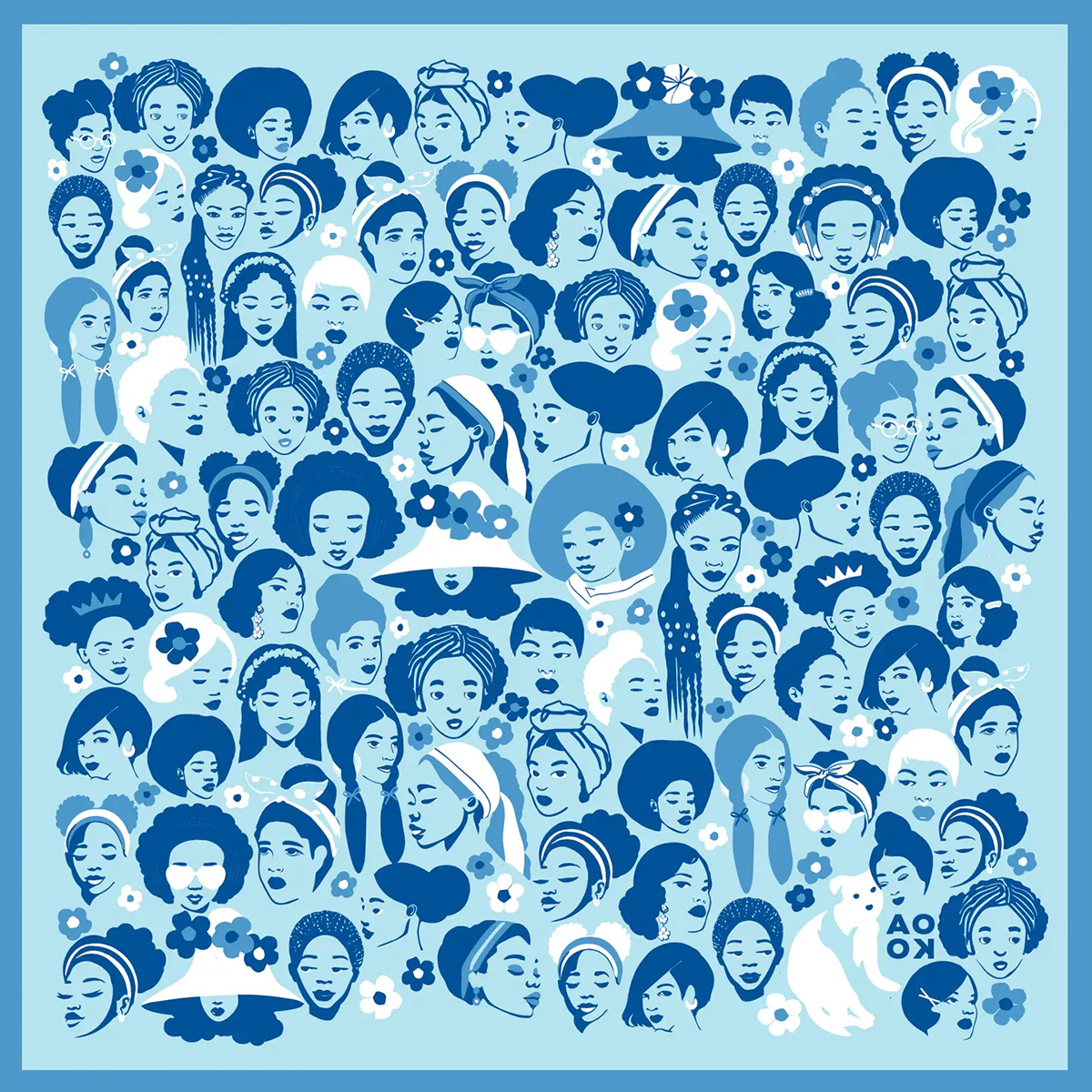
To unlock culinary creativity: The Curious Chef Gift Collection from Each Peach Market. This customizable collection of kitchen oddities — ranging from tinned fish to chili oil — is a quirky gift for the most inventive chefs. The collection is available in a Standard Santa, Extra Goodies and Super Holiday Size for up to $165. The Washington-based market, founded in 2013, permits customers to make the collection special by specifying what unique ingredients are packaged, including products made by local or LGBTQ brands. Each Peach Market offers assembly and pick up in-person at its Mount Pleasant shop and also offers local delivery and nationwide shipping via its website. ($85)
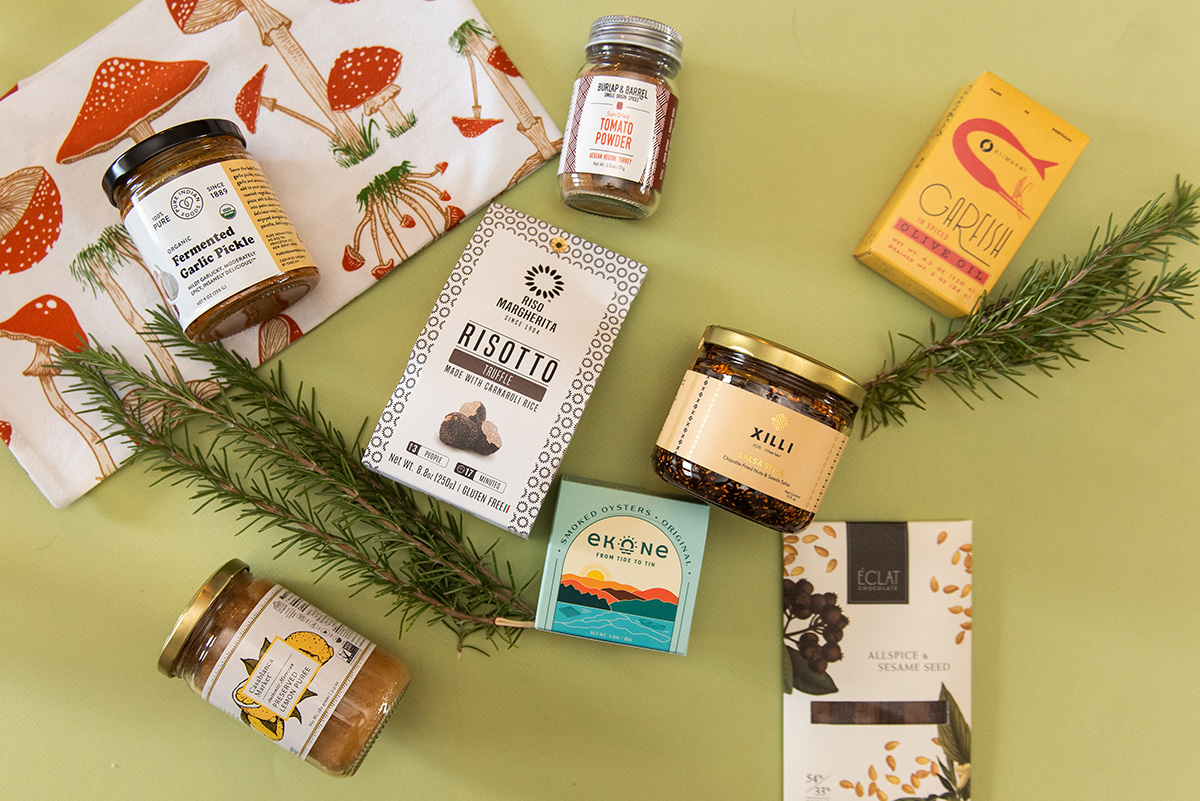
To give a touch of sweetness: The DC Landmark Chocolate Covered Oreo Holiday Cookies from Capital Candy Jar. Wrapped in a festive red bow, this box of nine cookies embraces love for Washington and the holiday season in one. Among the dark and milk chocolate covered cookies are images of the U.S. Capitol, the White House, the Lincoln Memorial, the Jefferson Memorial and festive hollies. The treat, packaged in a Hill East facility just a few blocks from the Capitol, is available for purchase online and at the DowntownDC Holiday Market. ($23.95)

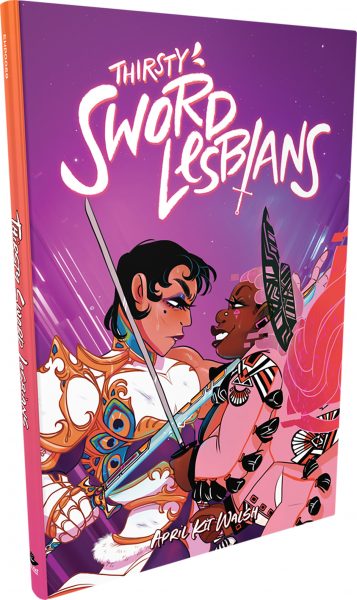
To celebrate queer gaming: Thirsty Sword Lesbians from Labyrinth Games & Puzzles. This roleplaying game embraces lesbian culture by unlocking a world of swords, romance, and battle. Ideal for group settings, the book presents a system of world building and character identities that are best brought to life by creative minds. Labyrinth, which has been a local Washington business for more than 15 years, celebrates non-digital fun through games and puzzles that connect the community. This gift is offered online and at Labyrinth’s Capitol Hill location. ($29.99)
To make a bold statement: The “Resist” T-shirt from Propper Topper. This locally screen-printed black tee features the Washington flag designed within a raised fist, symbolizing both Washington pride, and political resistance. The shirt is made exclusively by Propper Topper, a local Washington business that evolved from a hat shop to a gift store since opening in 1990. The tri-blend unisex shirt is available both for pickup at Propper Topper’s Cathedral Heights location and shipping via the online site. ($32)
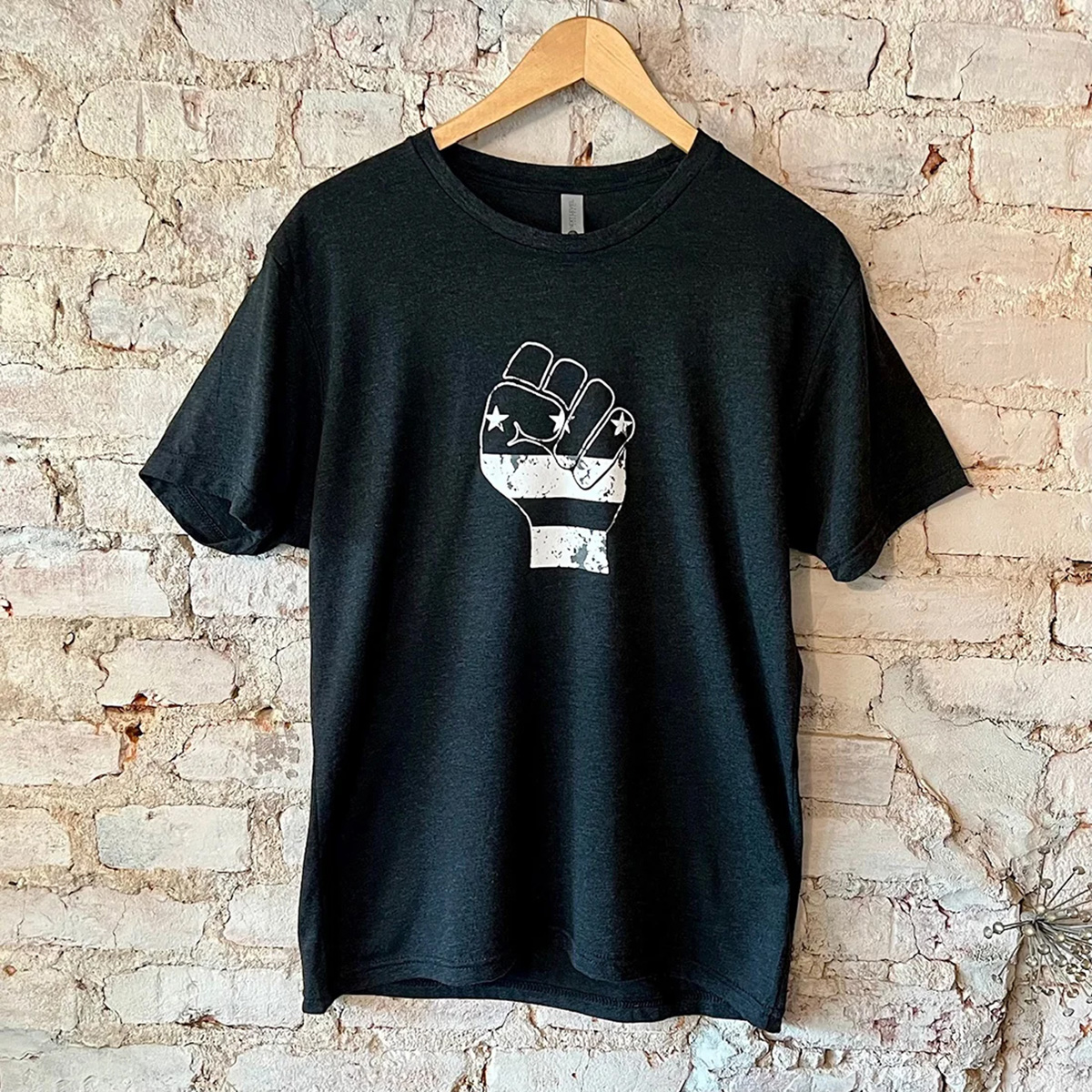
To keep it c(g)lassy: The Glass Ball earrings from Blue Moon Aquarius. Gifting can rarely go wrong when it comes to a new pair of earrings. The unique statement earrings — made of polymer clay, glass, and 18k gold plating over surgical steel — are hand cut, sanded and assembled in Washington, meaning each set is unique. Blue Moon Aquarius, a local brand, is known for its small batch jewelry and home decor designed with clay materials. Available in oxblood, hunter green, lavender, and bluestone color palettes, these earrings are available for purchase on Blue Moon Aquarius’ website and at the DowntownDC Holiday Market. ($48)
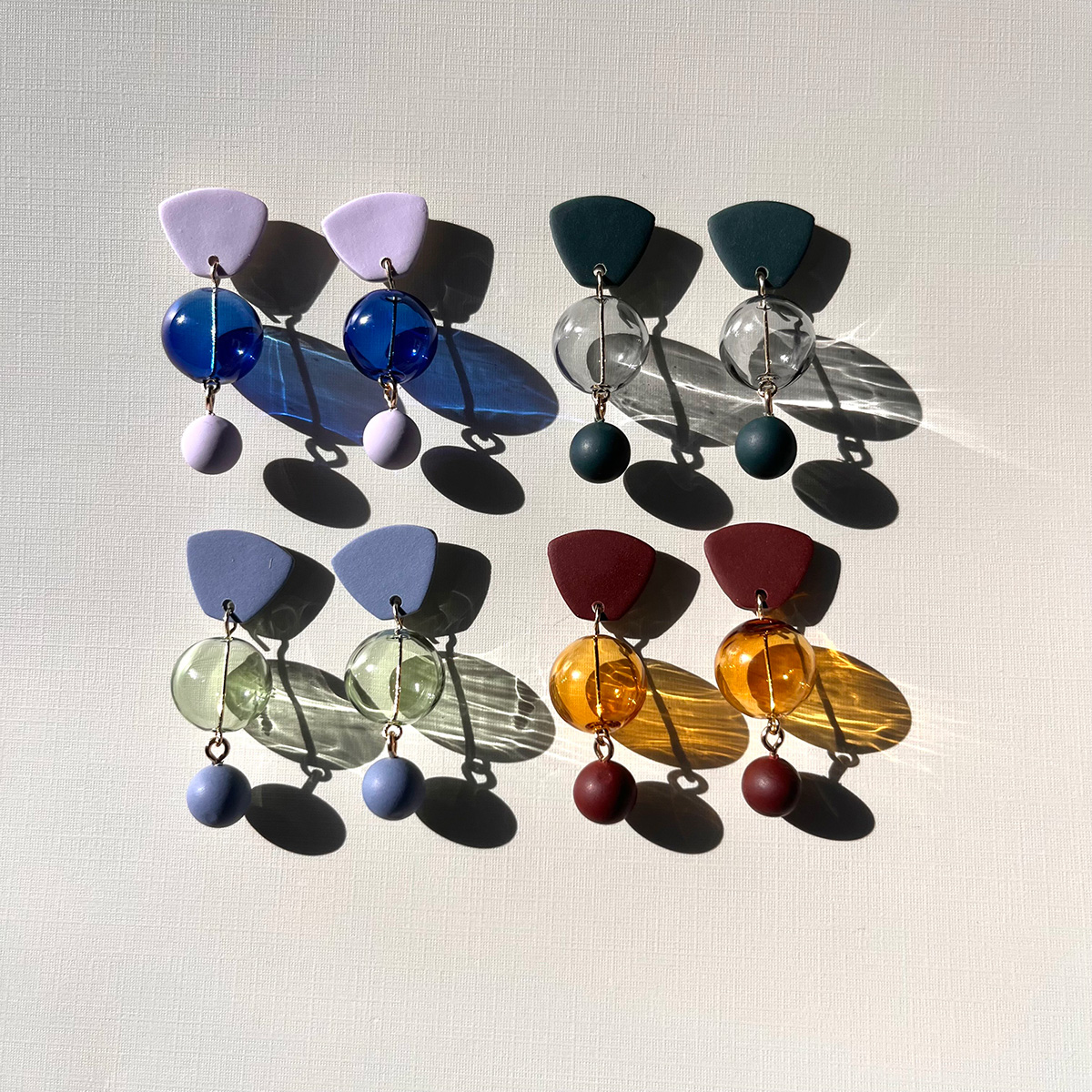
To elevate a holiday tea or charcuterie party: The Honey Flight: Tea Lover’s Selection from BannerBee. This local honey company presents the ideal gift to make cozying up with a cup of tea slightly more special. The Honey Flight contains three types of raw wildflower honey infused with fair trade Ugandan vanilla bean, chai spices, and locally sourced lemon thyme herb. The gift is also an opportunity to uplift a family company based in the Mid-Atlantic that offers all-natural, sustainable products. The flight is available online, at the DowntownDC Holiday Market or at the Arlington Courthouse and Dupont Farmers’ Markets. ($36)
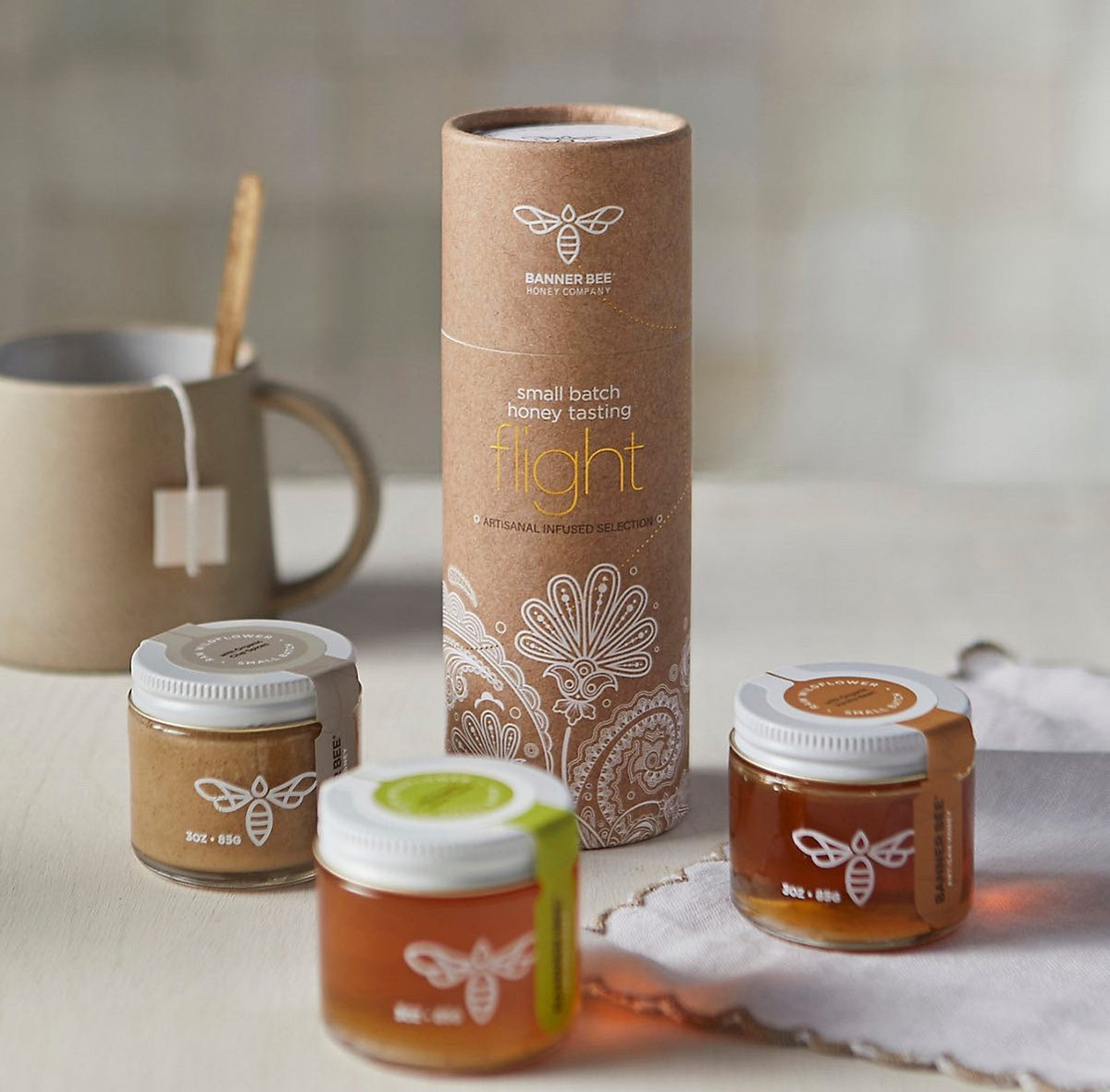
For Baltimore shoppers: If you’re in Charm City, don’t miss Balston Mercantile, opened by a gay couple in June. Their gorgeous shop in the Hampden neighborhood offers an array of unique, upscale finds, from barware and artwork to cookbooks and home decor and more. (849 W. 36th St.)



